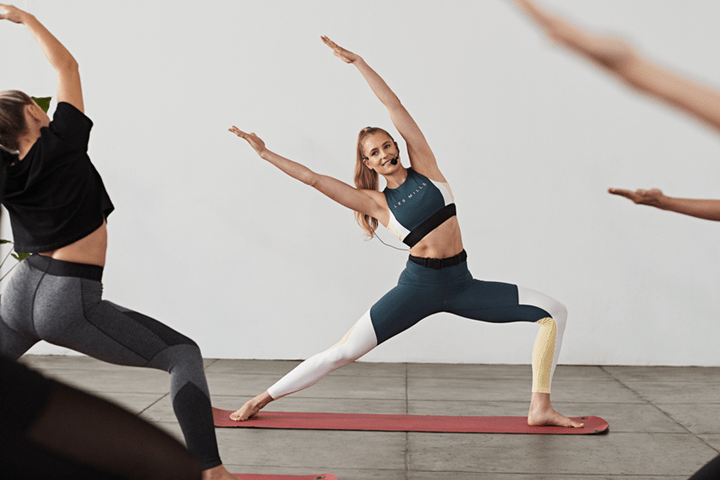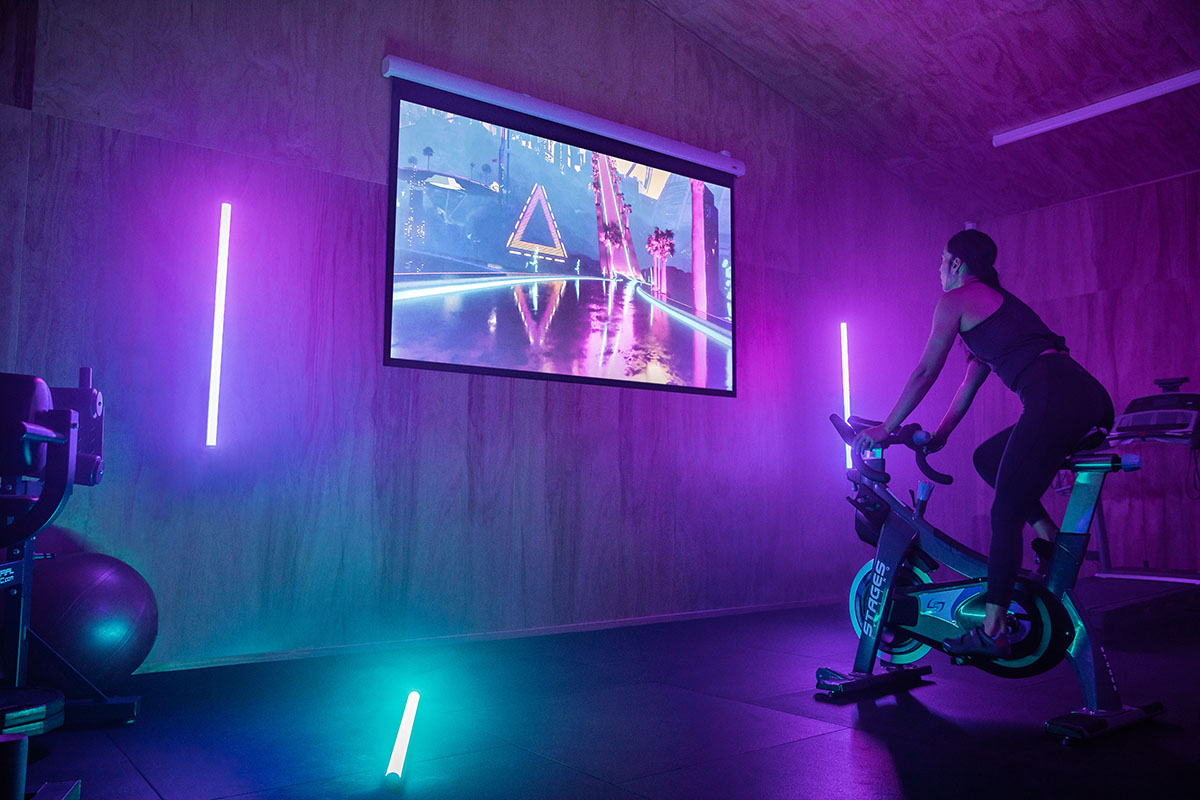
It’s been two years since the pandemic first shuttered the world’s fitness facilities and threatened our industry’s very survival.
Amid the toughest trading conditions ever experienced, many clubs have been forced out of business. The latest IHRSA figures show that 25 percent of US health clubs have closed permanently since March 2020, with more expected to follow.
But for those clubs that have endured, the crisis has also presented opportunities. In markets around the world, the clubs that have fared best during the pandemic have been proactive and embraced an agile mindset to overcome each challenge. Such operators are now emerging with stronger business models, bolstered by greater reach, new revenue streams and a meatier member proposition.
“The temporary closure of fitness facilities due to COVID-19 has persuaded many fitness operators to adapt their approach to business. For example, offering virtual fitness content that members can view at home,” noted ClubIntel in a COVID-19 special report.
“It is not the closures that speak to the dawning of a new era. Instead, it is how the fitness facility industry emerges from this COVID-19 cocoon that will frame the dawning of a new era.
“The dawning of this new era for the fitness industry will be defined by the ability of fitness operators to rethink their business model and value proposition.”
So what will this new dawn herald? And how can operators take advantage of these developments to secure a sustainable strategic advantage?
Here are 7 pandemic-driven shifts shaping the new fitness landscape:
1. A fast-growing market
The pandemic has prompted consumers to prioritize their health, with 50% focusing more on their wellbeing, according to the 2021 Global Fitness Report. Some 82% of consumers regularly exercise (or soon plan to), while 75% of this group do gym-type activities, making fitness the world’s biggest sport.
This presents latent growth opportunities for fitness providers as COVID restrictions recede and clubs return to full capacity. The key is identifying the groups your club is best placed to target.
For example, the pandemic has spawned a new generation of rookie fitness fans who have taken tentative first steps into fitness and are now deciding what comes next, with 27% of regular exercisers describing themselves as ‘absolute beginners’.
Opportunities abound for operators who can appeal to these groups and understand what they want from a fitness experience, as well as the unique barriers to exercise they face. Although 81% of beginners are interested in group activities, 66% say they currently prefer to exercise alone, suggesting a confidence chasm that needs to be bridged before beginners feel fully comfortable. Instructors and wider staff have a major role to play in ensuring they feel welcome, while helping beginners find intrinsic motivation to exercise holds the key to keeping them in the long-term.

2. Digital driving reach
The abiding legacy of the pandemic will no doubt be the explosion of digital fitness options and their increasing adoption by consumers. The competition this poses for clubs as major tech players enter the market has been well-documented, but it also brings a golden opportunity for operators to expand their reach and drive member growth by attracting fresh faces into their facilities.
Consider how your digital offerings can drive new leads and prospects in the bustling beginner segment by bringing your authentic club experience into the homes of groups who wouldn’t typically visit your club. This will help them build their fitness skills and confidence at home, starting a journey that sees them ‘graduate’ into your facility over time.
This also applies to maintaining your current member base. We’ve entered the age of omnichannel fitness, with 80% of members planning to continue using digital workouts post-pandemic. Apple, Google and Amazon are making digital fitness moves, but clubs remain uniquely placed to meet consumer demand for a 60:40 blend between live and digital workouts. Combining thrilling live workouts in the club with high-class digital options to provide a truly omnichannel offering can give operators the edge over digital-only rivals, keeping current members loyal and posing an attractive proposition to fitness beginners.
For Kevin McHugh, COO of The Atlantic Club in New Jersey, US, such a shift towards an omnichannel member offering is now table stakes for modern club operators.
He says: “Ourselves and other leading clubs must continue to do a better job maximizing the live in-club experience – which is our USP – as well as providing an outstanding range of digital options for when members can’t make it to the club and educating on how to get the most out of them.”
3. Owning the member journey
After years of aspiring to reach ‘beyond the four-walls’ of the club, the digital advances operators made during the pandemic means many now have the ability to truly own their members’ entire fitness journey, whether in-club or at home.
With excellent execution, the retention benefits this brings are two-fold. The extended reach from their digital offerings means clubs can do more to motivate members in between each club visit and maintain their exercise habit, while it also reduces the risk that their heads will be turned by rival offerings online or elsewhere.
For operators, maximizing this opportunity requires a total reimagination of the member journey and how we measure engagement. Instead of simply tracking club attendances, we need to pan out and look holistically at all the touchpoints a member has with their facility – including home workouts via the club’s digital offering, and even use of the club app – to accurately assess member engagement and take actions to enhance this.
“One of the most important strategies that health, fitness, and wellness clubs need to employ is to expand their reach beyond the traditional bricks and mortar to provide members with a total wellness solution,” adds Kevin McHugh. “The leading health and fitness clubs of the future will provide a full omnichannel solution to members.”

4. More agile club models
With their reliance on office workers and prime city center locations, the pandemic proved particularly tough for boutique operators, with 30% subsequently closing as per the latest IHRSA figures and the shift towards home working continuing to sting.
But despite these setbacks, appetite for boutique experiences is higher than ever among consumers, sparking a surge of new partnerships and boutique-influenced club models.
‘If you can’t beat them, join them’ seems to be the preferred tactic, with leading big-box clubs around the world investing in their group fitness offering to create boutiques within their clubs. November 2021 saw boutique collective Xponential announce a deal to retrofit boutiques into LA Fitness and City Sports Clubs; West Wood Clontarf in Dublin has seen stunning results from its cycle boutique The Chain; while big-hitters like Pure Group and Virgin Active in Asia have reaped rewards by investing in THE TRIP.
By offering a world-class boutique experience alongside established benefits like pools, parking and unrivalled gym floors, big box clubs are making a compelling case for a greater share of their members’ wallets, while negating their need to look elsewhere for boutique workouts.
And the boutique breakout doesn’t stop there. As well as big boxes getting in on the boutique act, we’ve also seen the emergence of new operators – like Styles Studio Fitness in the US and Coach Gyms in the UK – fusing the best of big box and boutique in a bid to bring luxury group workouts to the masses.
5. Embracing the outdoors
As COVID restrictions stayed in place longer than expected, outdoor group fitness presented a practical solution for clubs to bring back members quicker and reach new audiences.
But is there a bigger opportunity at stake here? Could going ‘beyond the four walls’ in a literal sense help clubs attract new audiences and elevate the member experience? Our recent feature offered eight top tips for winning with outdoor group fitness, drawing on insights and examples from innovative clubs around the world.
What quickly became clear was that outdoor workouts offer clubs the opportunity to engage fitness newbies and passing trade earlier, as well as enticing regular exercisers who may have stayed away from clubs in the past as they prefer being outdoors.
“We’re coming off the back of the biggest pandemic in a century and health is now everyone’s top priority, so I think there are huge opportunities for clubs to play a more prominent role in getting people healthy and fit,” says Eddie Tock, CEO of REX Roundtables, which works with 2,700 of the world’s leading clubs to grow their membership.
“The key will be to make club activities more accessible, by offering more outdoor and digital workouts, as well as acknowledging that people will want to work out in lots of different ways. This can help us to engage the other 80 percent of the population and go fully mainstream.”

6. A bigger slice of the pie
With consumers taking a more holistic view of their health, exercise is being increasingly acknowledged as the cornerstone of living well.
The challenge for operators is to show how their services can contribute not just to people’s physical health, but their mental and spiritual health as well, in helping to tackle conditions that affect large sections of the population. This opens up exciting opportunities for how clubs can adapt their marketing to target different audiences.
For example, a recent study showed that taking part in regular BODYBALANCE™ classes can help increase sleep quality, reduce anxiety and increase confidence. How many people can you think of who would be intrigued by the offer of less stress and a better night’s sleep?
“As well as making our offerings more accessible, we also need to look at how we market ourselves through the lens of behavior modification, emphasizing the endless benefits brought by the miracle cure of exercise, whether that’s reduced risk of cancers, better mental health, or alleviating back pain,” adds Eddie Tock.
“Big Pharma hates fitness because our product provides the benefits of their most lucrative drugs, with none of the side effects.”
7. Fitness ubiquity
In addition to grabbing a greater slice, operators can also look forward to a bigger overall pie to compete for. As home working becomes more prevalent and the boundaries between work and play are blurred, so too are the distinctions around the provision of fitness services, creating significant opportunities for clubs.
Employers are increasingly coming to recognize the benefits of an active workforce (and their responsibility to support this), while employees are gravitating towards companies that care, so the offer of quality fitness services is becoming a key differentiator.
The impact that wellness offerings can have on both work performance and employee health is also accelerating their prevalence, creating lucrative opportunities for omnichannel fitness providers to proffer their services and reach lucrative new audiences.
For clubs, the ability to demonstrate the scientifically-proven impact of their workouts will place them in the box seat for winning in the workplace wellness market, where decision-makers place huge value on demonstrable Return on Investment (RoI).
THE GAME HAS CHANGED AND SO HAVE THE RULES
Learn the new rules of fitness and how your club can win with the 2021 Global Fitness Report.
DOWNLOAD THE FINDINGS
